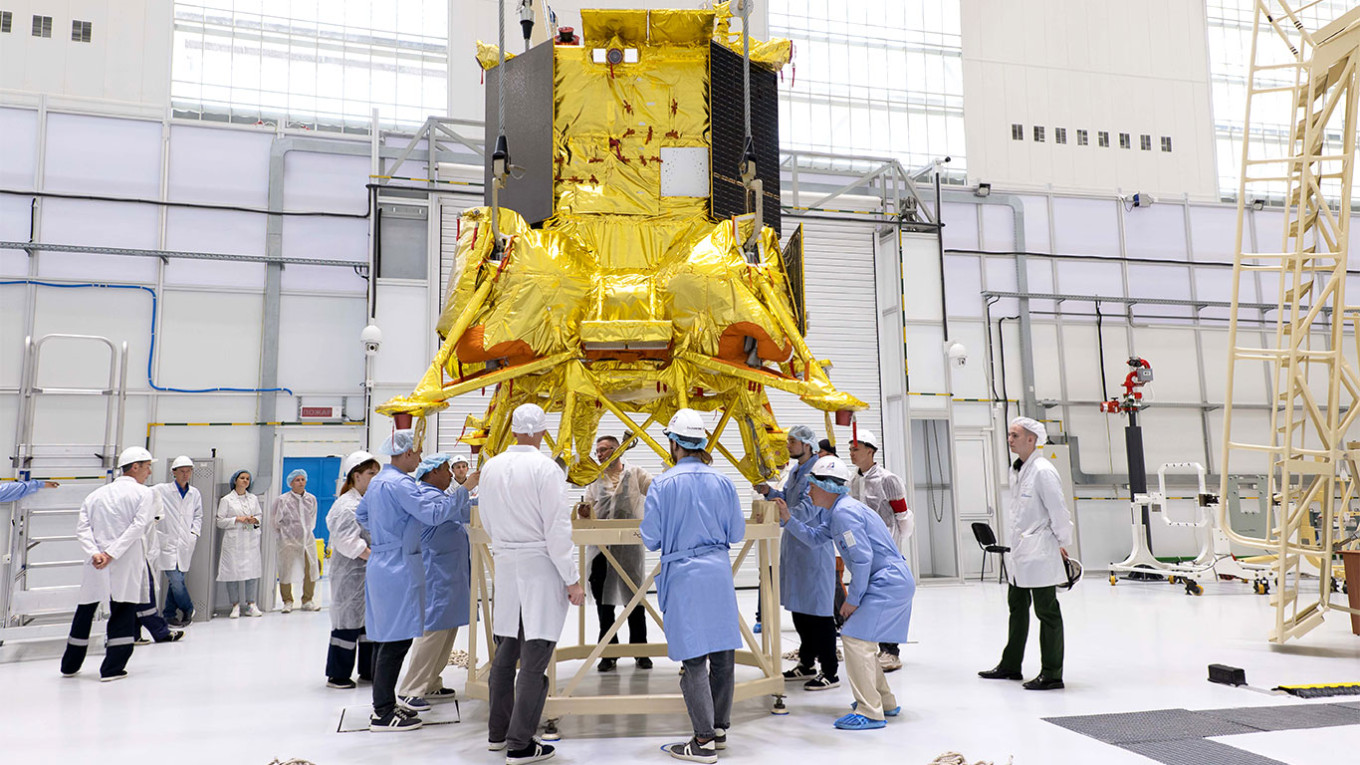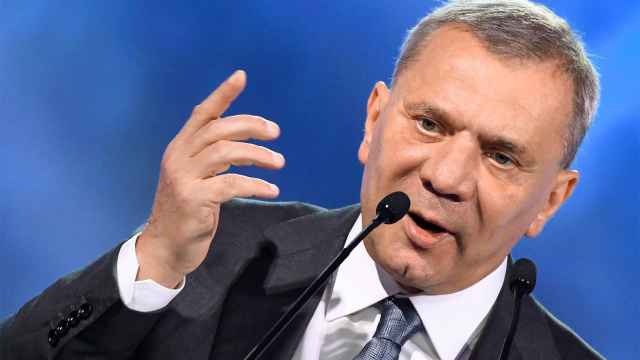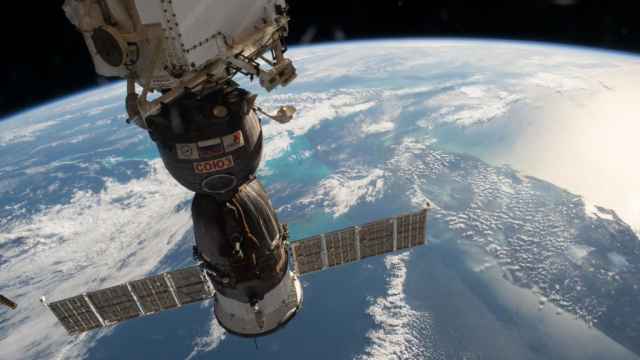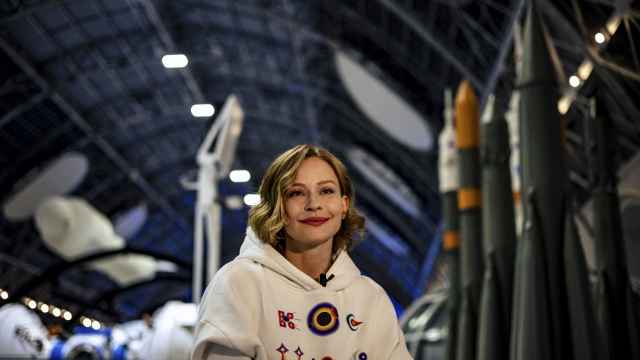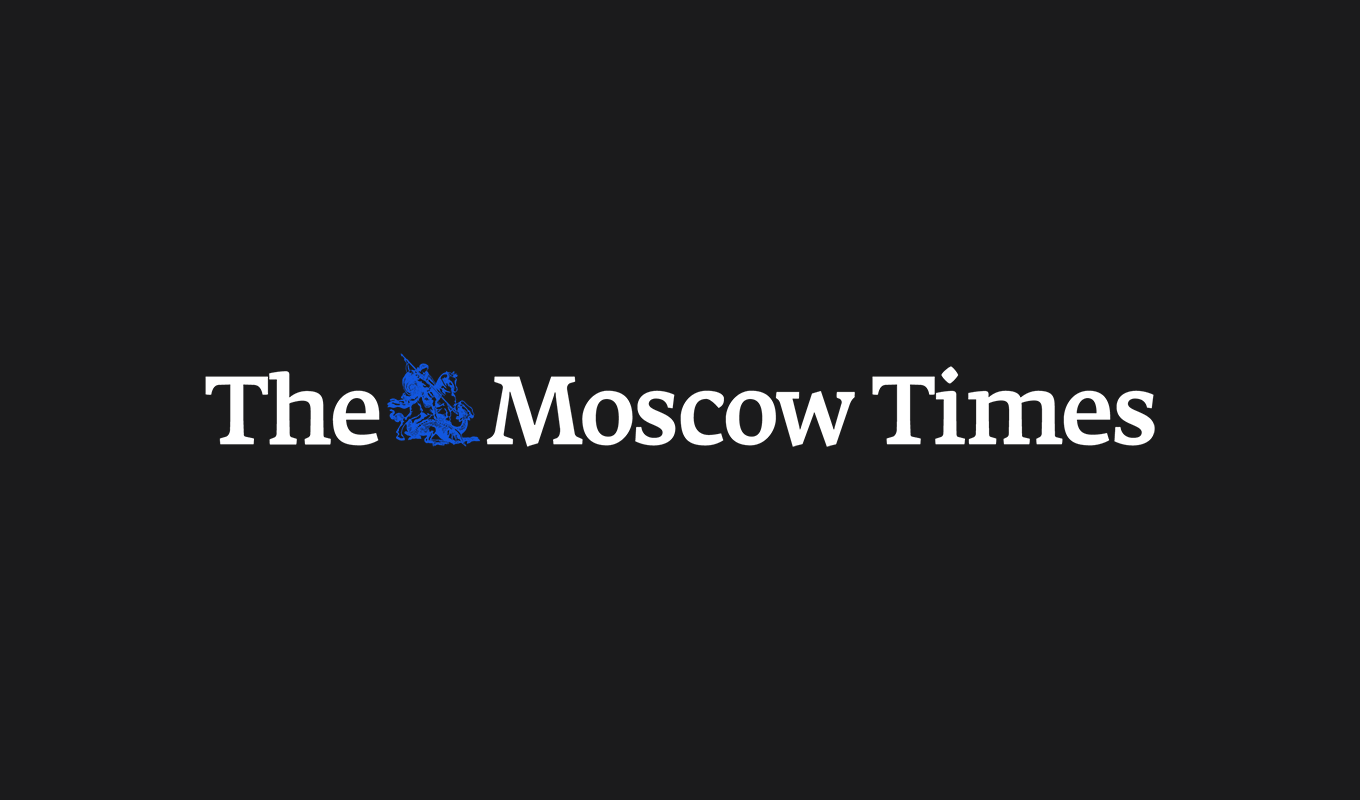The crash of Russia’s Luna-25 spacecraft on the surface of the Moon on Aug. 19 marked the Roscosmos space agency’s latest unsuccessful attempt to explore interplanetary space. While the causes of the accident are still being investigated, it is already clear that it was brought on by a series of problems afflicting the Russian space program: a lack of funding and engineering personnel, dependence on the political interests of the state, and vulnerability to Western sanctions in procuring crucial electronic components.
Launching a research probe to the Moon has been a goal of Russian scientists since the 90s. The modern Russian state’s first interplanetary mission, Mars-96, failed in 1996. As a result, scientific organizations decided to moderate their ambitions and take up an apparently easier goal — landing a probe on the Moon.
At that time, the Russian space program was in a different situation compared to today. While the industry was seriously underfunded, it had highly professional personnel who in Soviet times orchestrated successful research missions to Venus. The Soviet Union had less luck reaching Mars, but this was due to the imperfection of Soviet electronics, and not from a lack of professionalism.
Financing for the project only became stable in 2005, when Roscosmos included it in the Federal Space Program for 2005-2015. Subsequently, the project had to be repeatedly revised, primarily due to this lack of funding.
In the 2000s, the space program suffered a financial crisis, and within the industry there was constant competition for money between different projects. Their supporters were labeled the "Martians" — those who wanted to research Mars; "Lunatics" — those who prioritized the Moon; and "Astrophysicists" — who wanted to probe further into deep space. Priority was given to projects which enjoyed the support of international partners or promised ambitious discoveries.
Much depended on the authority of the key lobbyists of each persuasion. At first, the Astrophysicists won, and they were able to get money for the Integral space telescope project in collaboration with the European Space Agency.
When it came to exploring the solar system, Roscosmos' interest remained with Mars, so preference was given to the Phobos-Grunt project. The mission promised a more ambitious achievement: retrieving soil from Mars’ largest moon, Phobos. The Moon has always been peripheral to the state’s interests, and was thus funded on a residual basis.
The prospects for a mission to the Moon increased in 2011, when the Spektr-R space telescope was launched in the summer, pleasing astrophysicists. But the Phobos-Grunt craft suffered a mechanical fault that winter, breaking apart while re-entering Earth’s atmosphere. Plans for a lunar craft were based on the design of Phobos-Grunt. Its failure forced engineers back to the drawing board. Also at that time, the makeup of the space industry itself was changing significantly; experienced scientists were leaving, with younger specialists coming in their place. They needed new ambitious projects with a high degree of risk to gain experience and prestige.
Several factors affected the implementation of the Luna program at once. One of the most significant was Russia's seizure of Crimea in 2014, which prompted U.S. sanctions blocking the export of high-tech electronic components to Russia. Many critical electronic elements had to be refurbished or procured from new suppliers. One of these devices — the navigation inertial unit Bius-L — could no longer be imported, so had to be produced domestically. The success of Luna-25 depended on its proper function when it crashed.
The second difficulty was again created by competition between the Martians and Astrophysicists. Although funding for space research in Russia improved through the 2010s, missions were left to compete for engineering personnel. The state-owned Lavochkin Association dominates the production of components for the space program. However, its manufacturing capacity was split between producing parts for weather-monitoring satellites and the Mars mission and space telescope programs. Because these missions were given higher priority, work on Lunar-25 was delayed.
Finally, in 2019, the Lavochkin Association completed its part in these projects, leaving more time for the lunar program. The latest delays and postponements of the launch, first to 2022 and then to 2023, were again linked to import-substituted control units. These would control the spacecraft’s position, determining its speed and distance to the surface of the Moon.
On Aug. 11, 2023, Luna-25 was finally launched from the Vostochny Cosmodrome in Russia’s Far East. A month earlier, India launched its lunar vehicle, Chandrayaan 3, which was supposed to land relatively close to its Russian counterpart. An unspoken race unfolded between the two probes. India had a head start, but its craft was moving along a more conservative trajectory. According to the plan, Chandrayaan 3 was supposed to land two days later than Russia’s spacecraft, on Aug. 23.
Eventually, Luna-25 was able to get closer to the Moon than Chandrayaan 3, but by that time Russian experts noticed "alarming signs."
An error occurred during the first correction of the craft’s trajectory to the Moon, which required the engines to be restarted. It had already become clear that the Luna-25’s flight was not going according to plan, although this was not officially reported. Once it started orbiting the Moon, nothing prevented the scientists from leaving the device for a few days, or even months, so they could study its shortcomings and try to fix them. Luna-25 was expected to operate on the Moon for up to a year, so the station could have stayed in orbit for a long time in the event of a malfunction. But if that happened, India would have beaten Russia in the race to become the first conqueror of the Moon’s circumpolar region.
In addition, on Aug. 22, Russia celebrates Flag Day. The flag of Russia had been placed on board the Luna-25 before its launch — perhaps Roscosmos wanted to debut a photo of the Russian flag planted on the Moon to mark the holiday.
The last operation before Luna-25’s touchdown consisted of entering a pre-landing orbit over the Moon with a height of 18 to 100 kilometers. When the engine was turned on, it took one and a half times longer than planned. Because of this, the angle of the orbit was lowered to an intersection with the surface, and the device crashed on the far side of the Moon.
The consequences of the accident may manifest primarily in funding cuts for future scientific projects in space when Roscosmos drafts the new Federal Space Program for 2025-2034. More precisely, this accident, and the damage it has dealt to the state’s prestige in this arena, can become a convenient reason to reduce research budgets at a time when all the state’s priorities are directed to the needs of the Defense Ministry.
Scientific research and lunar exploration are so alien to the interests of the current Russian government that scientists and officials at Roscosmos will have to work hard to convince officials to give them the necessary funding to continue.
Russia’s next mission to the Moon, Luna-26, is planned to be launched no earlier than 2027, and Luna-27 no earlier than 2028. But these dates may change depending on events on the frontline, the economic situation at home, and the stability of the Kremlin's power.
A Message from The Moscow Times:
Dear readers,
We are facing unprecedented challenges. Russia's Prosecutor General's Office has designated The Moscow Times as an "undesirable" organization, criminalizing our work and putting our staff at risk of prosecution. This follows our earlier unjust labeling as a "foreign agent."
These actions are direct attempts to silence independent journalism in Russia. The authorities claim our work "discredits the decisions of the Russian leadership." We see things differently: we strive to provide accurate, unbiased reporting on Russia.
We, the journalists of The Moscow Times, refuse to be silenced. But to continue our work, we need your help.
Your support, no matter how small, makes a world of difference. If you can, please support us monthly starting from just $2. It's quick to set up, and every contribution makes a significant impact.
By supporting The Moscow Times, you're defending open, independent journalism in the face of repression. Thank you for standing with us.
Remind me later.


